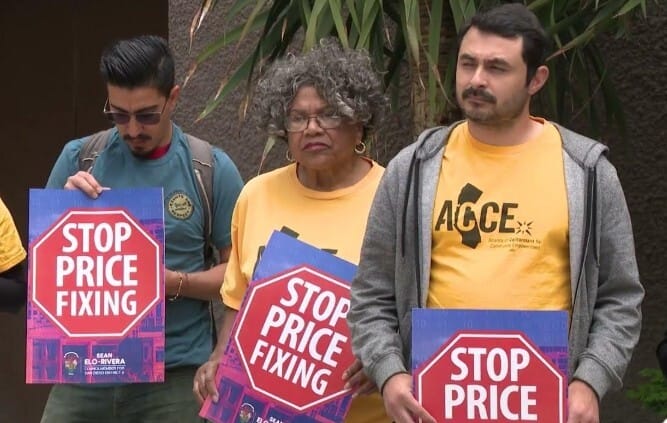- Property Management Brief
- Posts
- Tenant Wellness & Community Health Program
Tenant Wellness & Community Health Program

Good morning!
We’re picking up speed and making real progress. This week has been all about sharpening focus and driving action across key areas. With Q2 in full swing, now’s the time to stay locked in, move fast, and keep raising the bar. Let’s keep pushing.
— Lucas Robinson, Founder & CEO at BudgetMailboxes.com
🎯 This Week’s Strategy:
Tenant Wellness & Community Health Program
🤝 Boardroom Brief:
San Diego Bans Rent Algorithms
Strategy
🎯 Tenant Wellness & Community Health Program
Modern property management isn’t just about maintaining buildings -it’s about building communities. A well-designed Tenant Wellness & Community Health Program goes beyond maintenance and rent collection by actively improving tenants' quality of life. When tenants feel healthier, safer, and more connected, retention rates rise, complaints drop, and your properties stand out.
How Property Managers Can Implement a Tenant Wellness & Community Health Program
1. Understand the Needs of Your Tenant Community
Before launching any wellness initiatives, take time to understand what matters most to your tenants. Different demographics may prioritize different wellness needs. some may value mental health resources, while others might prefer fitness opportunities or family-friendly programming.
Action Steps:
✅ Send out a quick tenant survey to identify interests (mental health, fitness, nutrition, community events)
✅ Analyze demographic data to tailor your approach (families, seniors, young professionals, etc.)
✅ Review past tenant feedback to identify wellness-related pain points
2. Introduce Health & Fitness Amenities
Physical wellness plays a major role in tenant satisfaction. Offering easy ways for tenants to stay active or unwind can improve their day-to-day life—without them needing to leave the property.
Action Steps:
✅ Partner with local fitness instructors for on-site yoga or bootcamps
✅ Add walking paths, bike racks, or small workout stations (even outdoors)
✅ Provide access to virtual fitness subscriptions or wellness apps
3. Promote Mental Wellness & Social Connection
Community-building is a major driver of long-term tenant retention. Simple initiatives that reduce isolation and encourage connection can have an outsized impact on tenant happiness.
Action Steps:
✅ Host monthly community events - coffee mornings, movie nights, wellness workshops
✅ Create quite /common spaces for relaxation, reading, or remote work
✅ Offer resources like mental health hotlines or counseling referrals
4. Improve Air Quality & Cleanliness Standards
Wellness also comes from the environment itself. Cleaner, healthier living spaces build tenant trust and satisfaction.
Action Steps:
✅ Upgrade HVAC systems and install air purifiers in common areas
✅ Use eco-friendly, non-toxic cleaning supplies for routine maintenance
✅ Communicate openly with tenants about cleaning schedules and health precautions
5. Build Partnerships with Local Health Services
You don’t have to build a wellness program from scratch- tap into your community’s existing infrastructure.
Action Steps:
✅ Partner with local clinics or mobile health units to offer periodic screenings
✅ Promote vaccination clinics, dental check-ups, or wellness fairs
✅ Highlight local health & wellness services in newsletters and community boards
How to Get Started
Start small and scale intentionally. Choose one initiative that aligns with tenant feedback and roll it out with a clear communication plan. Track engagement, ask for input, and build from there. These programs don’t just benefit tenants, they show that you care, and that builds lasting loyalty.
Produced by BudgetMailboxes 🤝 Thanks to the BudgetMailboxes Team! Looking for top-quality mailboxes, cluster boxes, or street lights? Let our expert team at BudgetMailboxes assist you. Contact us today to get started! |  |
Boardroom Brief
San Diego Bans Rent Algorithms

San Diego passed a new ordinance that prohibits the use of automated tools to set rental prices. City officials say these tools may contribute to rising rents and reduced housing affordability. The new rule includes fines for violations and signals a broader shift toward regulating tech-driven practices in the rental market. Property managers should review their current pricing methods and ensure compliance with evolving local laws - while also considering how to balance data insights with fair, transparent pricing strategies.
Game
🎉 Fun Finale: Play & Poll
Which two U.S. states do not observe Daylight Saving Time?(Tap on your Answer) |